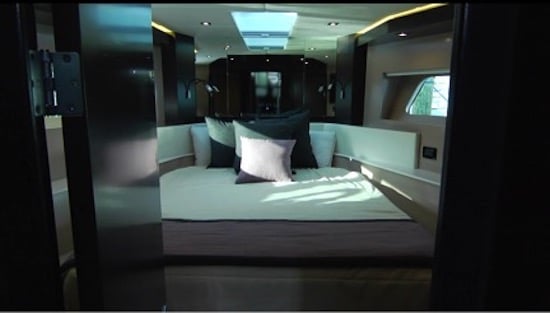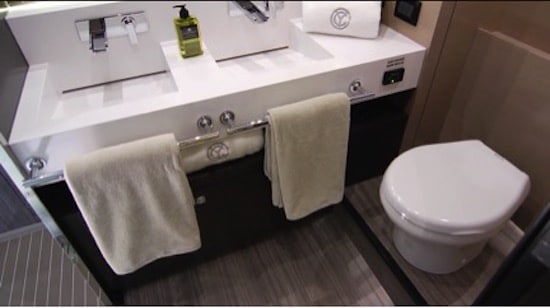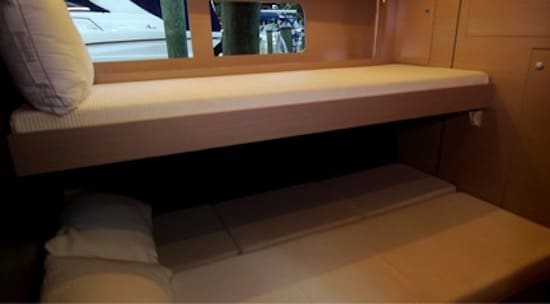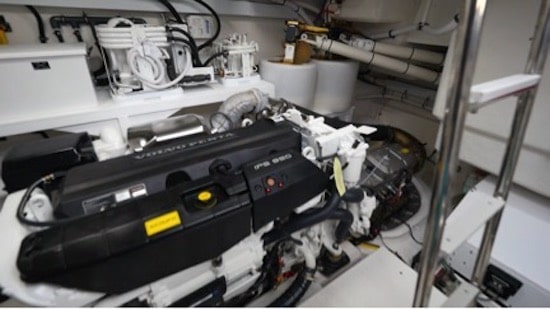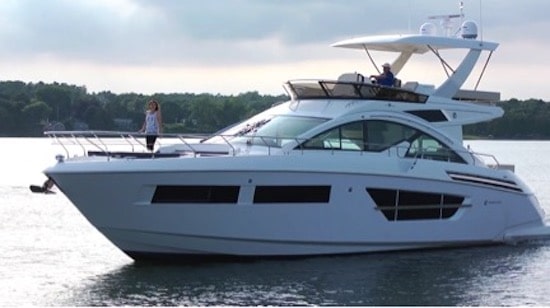CRUISERS YACHTS 60 FLY BOAT TEST
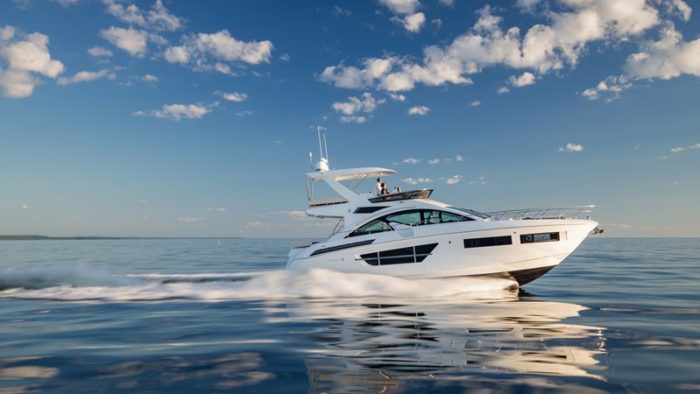
Brief Summary
Large hull-side windows in the Cruisers Yachts 60 Fly bring light to the two- or three-cabin layout below decks to match that brought into the main salon/galley by the arching windows above decks. We find docking particularly easy from the flying bridge. A lazarette large enough to hold a kayak or multiple water toys sits between twin stairways leading to the cockpit from the swim platform.
Key Features
Flybridge with built-in grill and wet bar
Cockpit U-shaped dinette
Galley with microwave, convection oven, wine steward, bottle storage, icemaker, and dishwasher
Helm includes captain’s chair with companion seat
Upper salon with U-shaped settee
Master stateroom features a plush king-size bed, café table and seats with panoramic windows
Deluxe bow lounge with reverse crescent seating, port/starboard reclining sun lounges, and room for two side-mount tables
Built-in, full-size washer and dryer
Mission
The Cruisers Yachts 60 Fly is a further step in Cruisers’ fleet, offering a luxury approach via beautiful accommodations, plentiful amenities, and a forward-thinking design. Cruisers isn’t the only luxury brand on the block, so their strategy seems to be updating design and features for a modern, sleek feel that will look ahead of the curve for owners and their guests. The 60 Fly can accommodate a day trip, a weekender, or a multi-week excursion with ease.
The 60 Fly’s floor plan, top to bottom: fly bridge, main deck, lower deck.
Major Features
• Masterful accommodations. The 60 Fly has two staterooms with the potential for a third. Each is meticulously crafted not just with amenities — walk-in closets, HDTVs, queen and king-size beds — but with a sophisticated, modern design.
The rear docking station with one of three joystick installations throughout the boat.
• Rear Docking. The joystick control on the 60 Fly is a major selling point, as it should be — the improved maneuverability is huge for safety and prolonging the life of your boat. Primarily useful for docking situations, anyone with experience on a boat knows that sightlines change — so not only is the joystick installed on the main helm and fly bridge helm, it is in place in the rear cockpit as well.
• Bow Lounge. The bow seating area has reverse crescent seating, port and starboard chaise lounges, and the ability to install two side-mounted cocktail tables.
The washer-dryer is in the lower deck and is one of many top-flight conveniences standard on the 60 Fly.
• Washer & Dryer. The 60 Fly is well-stocked with little notes of convenience, and the washer/dryer is the prime example.
• Fly bridge. The 60 Fly’s fly bridge has a hardtop, wetbar, grill, refrigerator, cocktail table, and bridge helm.
• Wine Refrigerator. The wine refrigerator holds up to 17 bottles of wine or champagne with cabinetry in black or tay oak.
• Seakeeper. Cruisers outfitted the 60 Fly with this anti-rolling gyrostabilizer, which keeps the horizon where it belongs.I’m a new Text block ready for your content.
External Shot
The aft swim platform. Note the steps on either side of the lazarette, and the concealed swim ladders to port and starboard. The aft swim platform with kayaks tethered and lazarette hatch open. Note the size of the storage relative to the spokesperson.
Aft cockpit and swim platform. Starting in the aft swim deck, the 60 Fly can be outfitted here with teak or fiberglass decks. The swim platform has a concealed reboarding ladder and stainless steel grab rails and cleats. For storage, there is also an electrically powered hatch that lifts to reveal a lazarette for kayaks, water toys, and whatever other large items need stowing.
View of the cockpit from the swim platform. Note the teak table, bar stools at the breakfast bar window, and the individual wood steps to the fly bridge.
Cockpit socializing. Entry to the cockpit via a series of three steps comes both port and starboard with the lazarette forming a center console that creates a flow between the two spaces. Sitting atop this structure is the U-shaped settee seating on the rear cockpit, which wraps around a table with a wood surface and four stainless steel cup holders at the corners.
The cockpit grill is to port and just abaft of the breakfast bar window into the salon.
To port is an optional stainless grill, complete with two barstools opposite the settee.
These two barstools sit facing aft toward the cockpit settee, up against the breakfast bar window above. Note the cockpit grill to port.
The individual steps up to the fly bridge from the cockpit. Note the stainless steel grab rails on either side.
To starboard is the stairway up to the fly bridge — individual wood steps with a metal guide rail up the sides. Both starboard and port side steps up from the swim platform continue along to the pathways up to the foredeck. The 60 Fly’s high bulwarks and guide rails are an essential safety element for travelling to the foredeck.
The pathway to the foredeck. Note the high bulwarks and grab rails for safety.
Foredeck seating options. The bow sunning space is a popular design feature on modern boats — whether the U-shaped seating with fill cushions to convert to sunpad, integrated chaise lounges, or a simple sunpad, customers expect that foredeck space to be a place for lounging and sunbathing.
The bow seating area. Note not just the chaise lounges in the center of frame but the bench seating aft of these. Note the adjustable backrests on the lounges, as well as the optional overhead sunshade.
The 60 Fly is no exception, and more. The decks are recessed below the boat’s center hardtop structure and the reclining space, which rises up out of the center of the foredeck space. Two chaise lounges sit on either side of this space, straddling a tinted hatch accessible from the cabin below. The lounges both have adjustable backrests and cup holders sit between them.
Moving aft, built just forward the windshield, is bench seating. Now, a foredeck that normally accommodates two in the interest of sunbathing, can add three more people — making the foredeck a much more versatile space. Additionally, a sun shade tent can be erected to make it less about sunbathing and more about the view or a good book.
Flybridge
One of the flybridge lounges, this one to starboard of the center helm console. A matching lounge is found to port as well with a seat just forward the helm.
Center console helm. The flybridge has a center console helm flanked on either side by sleek, slender chaise lounges with adjustable backrests, as well as another lounge just forward up against the center console. The helm is under the flybridge’s hardtop, which stops short of extending entirely forward to allow for sunning, but protects nearly all the way aft.
The helm on the fly bridge. Note the smaller wheel and digital throttle at the bottom of the frame. Just out of frame, on top of the dash along the white top, the fly bridge’s joystick control.
The helm station has 16” HD touchscreen navigation, as well as the boat’s joystick and digital throttle controls. The joystick and throttle are positioned on their own atop the console, which is out of type with the ergonomic layout of the rest of the dash panel. The helm seat is double-wide.
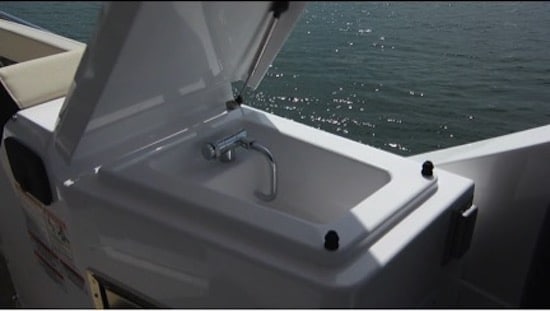
The fly bridge grill, with the drawer-fridge just underneath via the metal latch seen here. Note as well the woven mats on deck.
Refreshment accommodations. Just aft of the lounges flanking the center console are a sink and built-in cooler (starboard and port, respectively), both hidden under latched lids. Aft of the helm seat is a grill underneath another latched lid with a drawer refrigerator just underneath.
The aft seating on the fly bridge with teak cocktail table. Can seat as many as six people and is just a few steps away from the service dumbwaiter.
Further social seating on bridge. Aft of the helm station on the bridge is a U-shaped seating area around a large teak cocktail table.
Interiors
Main Deck – Salon/Galley/Helm
A view from inside the salon facing aft. Note the open glass door and window. The window can be electrically lowered to open things up completely. Note the countertop at window’s edge extends to form a “bar” on the outdoor side of the window.
Glass door and breakfast bar. Entry to the salon comes through a glass door off the cockpit. The door does not span the width of the opening between cockpit and salon, however, and this makes for an interesting design element.
The galley is just to port inside the salon door, and the counter space wraps around to come up flush with the salon door. The door, of course, stops where the countertop starts and extends across simply as a window. That window can easily be lowered to create a breakfast bar, which can then be accessed both from inside the salon, and by sitting at the cockpit barstools, which pull right up in front of the open window.
With the door open and the window down, a nice flow develops between the indoor and outdoor spaces on the main deck.
The galley in close-up. To the left here are the drawer-style fridge and freezer, with the microwave front and center. Note the countertop burners are under a liftable portion of the countertop.
This is the top drawer freezer (note the icemaker), bottom drawer is the refrigerator.
Close-up look at the countertop range with countertop lid lifted.

The optional dishwasher installed and displayed.
Galley design with an artisan’s touch. The galley has a solid-surface countertop with a wealth of space, a microwave, refrigerator and freezer (drawer style), two-burner glass electric stove-top, optional dishwasher, and plenty of storage. The sink is dual basin with a state-of-the-art Kohler faucet that is fully articulated. The design maximizes space, and the countertops look out through one of the salon’s big picture windows.
The Kohler faucet, which articulates in any direction at any angle.

The flooring in the main deck salon and the foot of the stairs in the lower deck; note the Amtico wood and high quality plush carpet.
The flooring in the salon is antique Amtico wood flooring, contrasted with the plush, comfortable carpet on the lower deck. Mid-salon, moving forward toward the helm, is the seating, with a U-shaped dinette with woodgrain table to port and bench seating to starboard. Storage comes underneath the starboard bench seating.
The dash on the 60 Fly. Note the dual surfaces, the digital throttle and joystick on the starboard armrest, and the Raymarine touchscreen displays.
Top-of-the-line helm station. The dash on the 60 Fly is impressive with a sleek dash angled off a flat surface right at the captain’s fingertips. The interface has two 16” Raymarine touchscreen displays, all of which can by synced and operated via your smartphone. Radar, GPS, autopilot, and compass all come standard. Also standard is Volvo’s IPS with joystick control.
The joystick — a huge advancement for boats of this size in docking and tight spot maneuvering — makes two additional appearances on the boat, one at the fly bridge helm and the other in the stern, where one may have better sightlines for a docking maneuver and can access it there.
The Stidd captain’s and companion’s seats. Note the adjustment buttons just below the seatbacks.
Electrically adjustable helm seats. The helm and companion seats are side-by-side Stidd bucket seats with flip-up bolsters as well as electrically actuated adjustability for easier access to all the boat’s controls and functions.
Lower Deck
Heading down to the lower deck via the stairs just to port of the helm, the ceiling over the stairway is left open instead, creating 14’ of atrium above the common area at the foot of the stairs. This, obviously, gets a wealth of natural light and is another example of Cruisers open, airy design plan.
The interior design is one of Cruisers’ big selling points, and the lower deck accommodations are stunning. Dark woods with light color accents, the entire space has an elegant touch with clean, modern lines and a light, open floor plan.
 Staterooms
Staterooms
The master stateroom looking starboard with the drawers, portlight, refrigerator and coffee maker in view. TV is just out of frame, facing the berth.
Two staterooms. The forward stateroom is the guest quarters, which has a queen-sized berth, TV and stereo, overhead peek-out skylight hatch with a blind to cover it, as well as a large fixed-glass window with an opening. The storage options in the staterooms are impressive — walk-in closets in both the guest and master staterooms.
The guest stateroom placed in the forward cabin. Note the natural light via two panoramic windows and overhead tinted hatch.
The guest stateroom shares the day head with the rest of the boat, but once lights go out, it has its own access from inside quarters. Both the day head and master stateroom en suite are also beautiful designs. The shower is spacious with a translucent door, waterfall shower head, a vanity with a mirror — those familiar with a “designer touch” will see them all over the lower deck, and in the heads for sure.
Master stateroom. The master stateroom is, no surprise, a lot like the guest stateroom — just, better. It has a king-size berth. It has a clothes locker with bifold doors. To port, it has a settee with coffee table under one of the two panoramic windows (with electric blinds), and to starboard sits a row of dresser drawers up against a coffee maker and drawer-style fridge. The berth faces an HDTV installed in the wall space.
The master stateroom en suite. Note the his-and-her vanities.
A view of the shower. Note the overhead showerhead and sprayer. Translucent door to the left of frame.
The master head en suite is also striking with his-and-her vanities, double shower, and cabinet storage.
One particular section of the lower deck can be customized as either a settee seating station or third guest room. Here is that space as Pullman-style guest room.
Salon or stateroom? The lower deck also has some measure of customization available in the lower salon. To starboard in the common area of the lower deck is a 7’ sofa seating space. This can be converted instead to a third stateroom for bigger parties and excursions.
Amenities, Extras, and Miscellaneous
The 60 Fly has air conditioning throughout the interior spaces of the boat, from the salon on the main deck to every area below deck. LED lights feature throughout the boat as well. A washer-dryer is stationed on the lower deck.
Construction
All of Cruisers’ yacht models incorporate fiberglass liner construction. Liners provide additional structure and stability, acting as an extension of the stringer system and providing rigidity by mechanically joining the stringers with the hull sides. This means more strength and less vibration for longer service life.
In addition, Cruisers also utilize cored construction in all fiberglass deck and hull components. The benefits of coring include lighter structures, increased strength-to-weight ratios, increased vibration absorption, plus thermal and acoustic insulation. Coring is generally more expensive — but this is the way of the world when you’re in the same market as a Cruiser — benefits outstrip the cost every time.
The Cruiser lamination process involves the sequential build-up of layers of fiberglass materials as opposed to applying multiple layers at once. This allows for exacting resin-to-glass ratios as well as layer-by-layer inspection process, which can identify and correct any air voids before adding additional, concealing layers.
Furthermore, all hulls also have a protective coating of vinyl ester resin incorporated into the hull laminate, beneath the water line, to prevent water migration through the laminate structure. This virtually eliminates any possibility of blistering. Cruisers use a high performance laminating resin that is a premium material and is custom blended for improved durability, increased toughness, and better cosmetics.
Power
The 60 Fly’s Volvo Penta in the engine compartment.
The 60 Fly is powered by 2 x 725-hp Volvo Penta 950 IPS engines.
Performance
When it came time to get underway, the maneuverability of the 60 fly showed through, as we had zero room to spare at our temporary berth. But it turned out to be a non-issue with the joystick operation. Although, we did notice about 1-secondnd delay between the stick input and engine response. Once into the channel we transferred to the sticks and steering wheel and eased her on out of the canal.
Test
The Cruisers Yachts 60 Fly has an LOA of 59’10” (18.24 m), a beam of 16’ (4.87 m), and a draft of 4’4” (1.32 m). With an empty weight of 56,700 lbs. (25,719 kg), 20% fuel, 70% water and three people onboard, we had an estimated test weight of 61,883 lbs. (26,726 kg).
With the two 725-hp Volvo Penta IPS950 pod driven engines powering our test boat, we reached a top speed of 32.4 knots at 2540 rpm. Best economic cruise came in at 2000 rpm and 21.9 knots. It was at that speed that the 60 Fly was showing a 47 gph fuel burn that translated into a range of 312 nm, all while holding back a 10% reserve of the boats 647-gal (2449L) total fuel capacity.
Of course, as we’ve come to expect with an IPS powered boat, the nautical miles per gallon changes very little from 1500 RPM on up to her top speed so this is more of a boat that can be driven based on the comfort level of the prevailing conditions, rather than concern over the range.
Now since this is an evolution of an existing model, the 60 Cantius, it bears mention of a short comparison of the two. The 60 Fly adds 4,200 lbs. (1,905 kg) or an 8% increase to the empty weight. And with the same engine powering both, we go from a top speed of 33.9 knots to 32.4. Best cruise goes from 22.6 knots at 2000 rpm to 21.9 knots with a fuel burn of 47 gph vs. 43.5 gph. Those are not bad…, for lack of a better term, penalties for the added benefits that the flybridge presents.
Handling
As for her handling… we had the usual solid feel of a heavy boat and that’s characteristic of the brand. She presents a narrow entry that carves nicely through waves and she kept a smooth ride through the minor chop of our test day.
During turns, the weight of the flybridge had her leaning 16-degrees into the turns and she made the typical wide arcs consistent with IPS powered boats. At 1950 rpm, she’ll come around 360-degrees in 40 seconds.
Docking
Of course the true measure of any owner-operated boat is how well she handles back at the dock. We showed this already as we pulled out and here we see it again as we come back, this time from the vantage point of the aft joystick station. Naturally we were able to control this big 60 footer with exacting precision that only a joystick can provide. And while we could easily see the starboard quarter from the flying bridge helm, it’s really great to be able to see the side deck while coming in, especially from a standpoint of coordinating and visualizing the crew.
Options to Consider
Cruisers does not offer a comprehensive list of the 60 Fly’s options, likely in part because the boat that comes standard is largely the boat you’re buying regardless — upgrades for further TVs, refrigerators, and a dishwasher do exist but nothing major.
The one design element offered as an option is the ability to keep the standard sofa seating in the lower deck salon or add an additional third berth.
Observations
Cruisers Yachts certainly delivers on its core goals for the 60 Fly.
There isn’t much in Cruisers’ mission on this boat that they haven’t achieved — comfort, entertainment, enviable design. The 60 Fly isn’t just luxurious, it has the distinction of feeling particularly “modern” and “up-to-date” in design. The twin 725 horsepower IPS engines fit the boat to perfection with ample power, innovations to make navigation and handling easier and more fun and a precisely crafted hull system to handle all the action.
If you’re in the market for a boat of this caliber, it is hard to imagine finding a boat of this caliber anywhere but with Cruisers.
Test Result Highlights
Top speed for the Cruisers Yachts 60 Fly (2017-) is 37.3 mph (60 kph), burning 75.5 gallons per hour (gph) or 285.77 liters per hour (lph).
Best cruise for the Cruisers Yachts 60 Fly (2017-) is 19.0 mph (30.6 kph), and the boat gets 0.5 miles per gallon (mpg) or 0.21 kilometers per liter (kpl), giving the boat a cruising range of 307 miles (494.07 kilometers).
Tested power is 2 x 725-hp Volvo Penta IPS950.


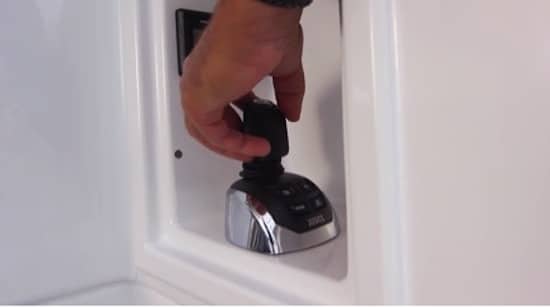
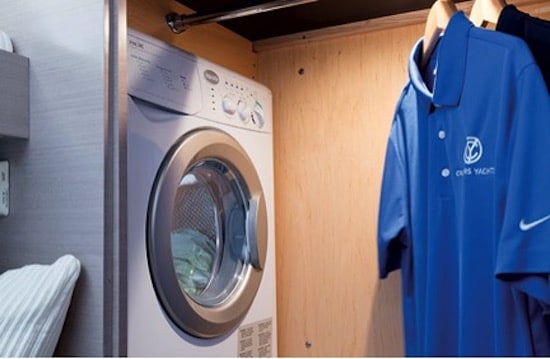
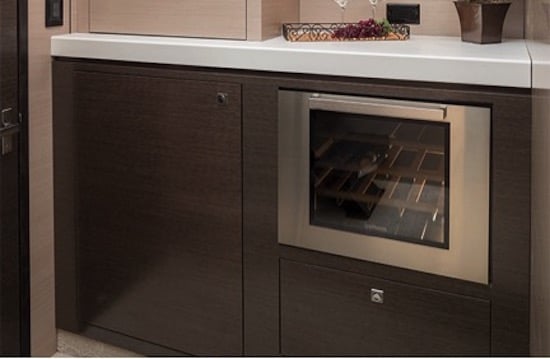
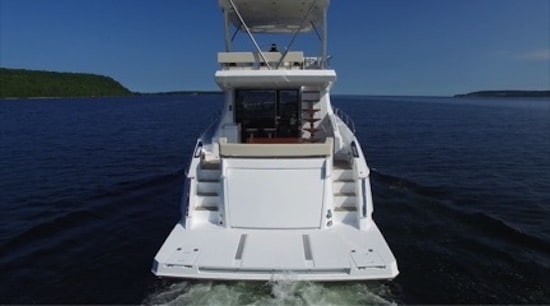
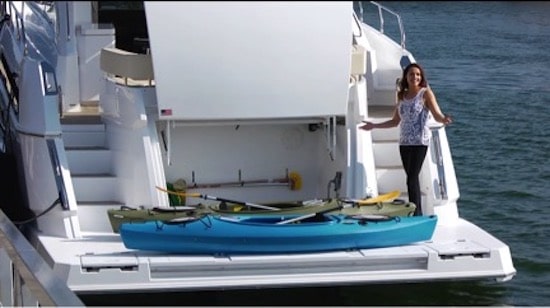
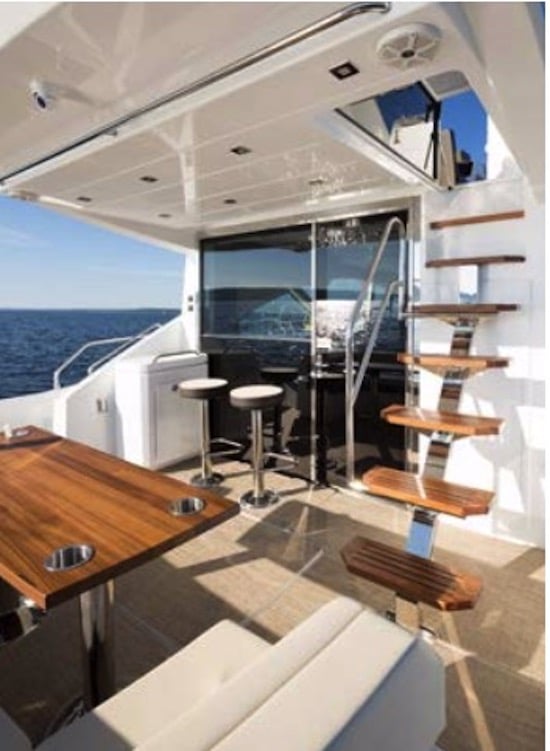
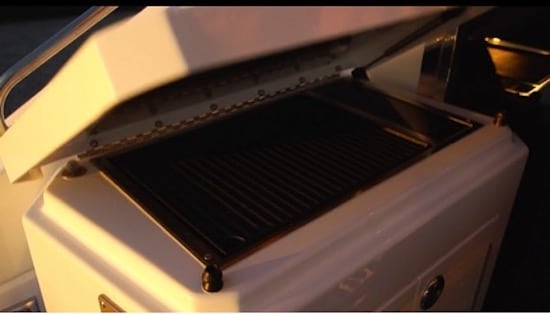
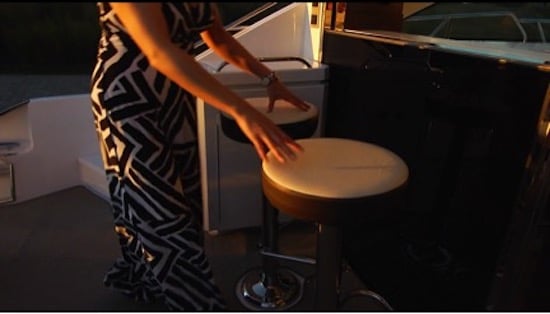
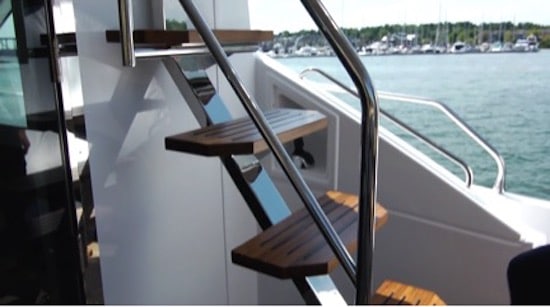
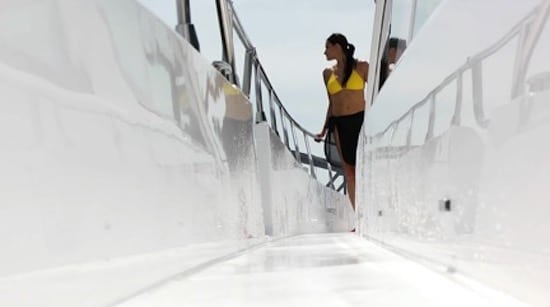
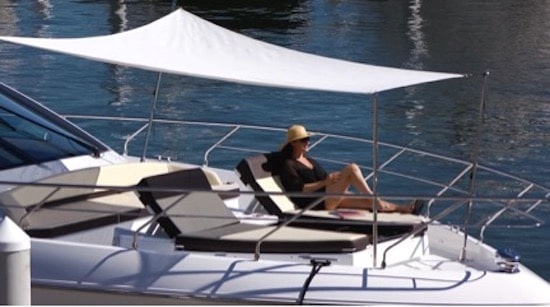
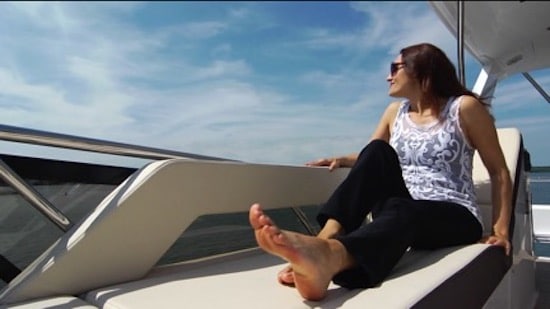
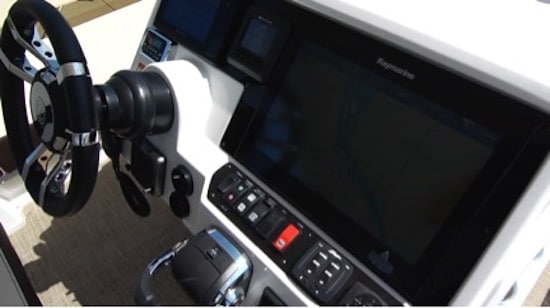
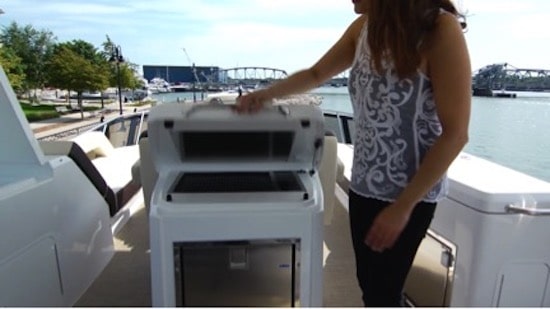
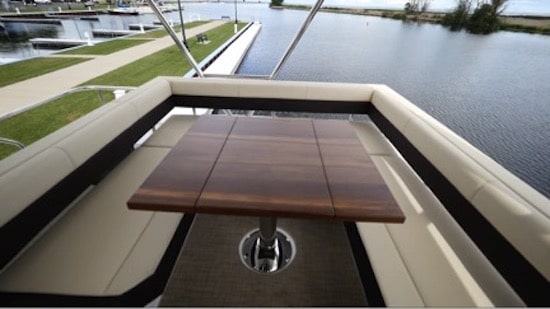
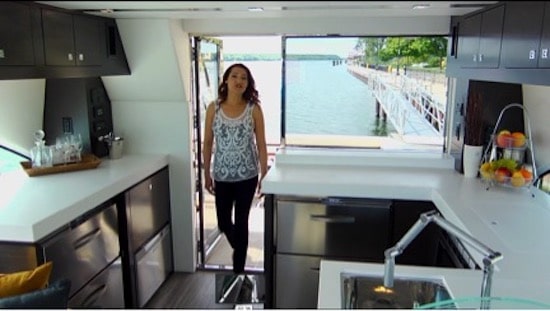
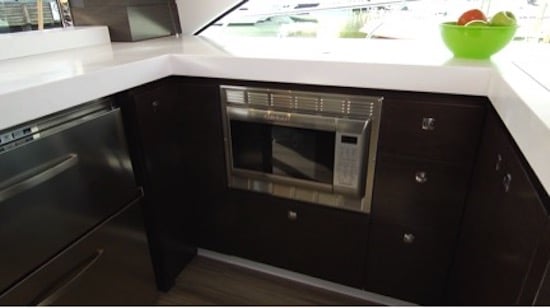
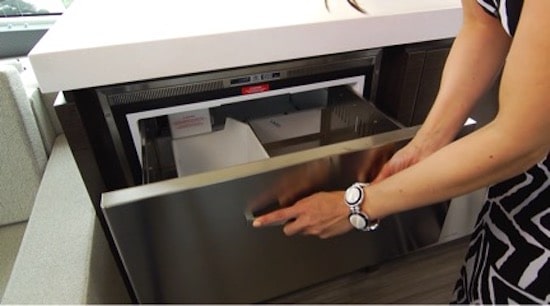

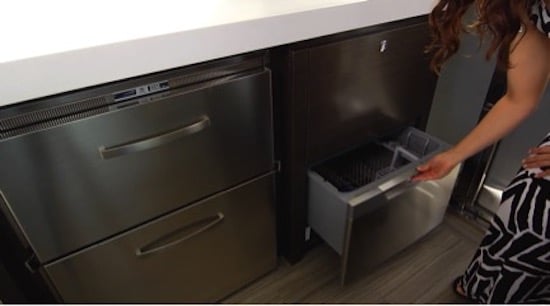
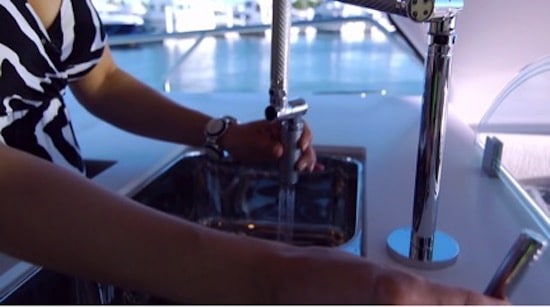
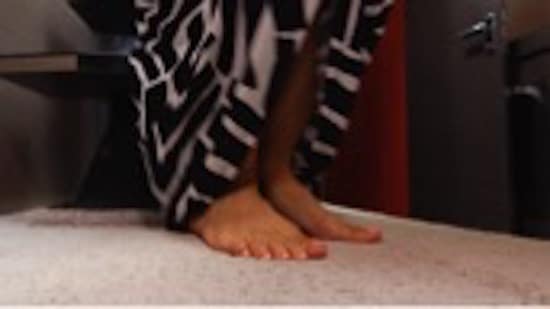
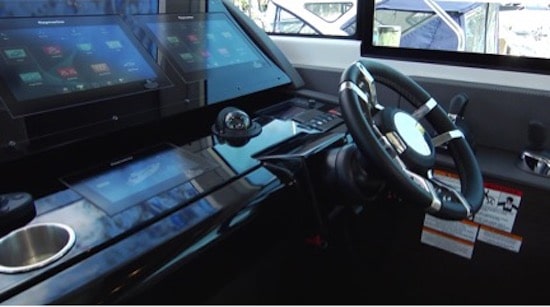
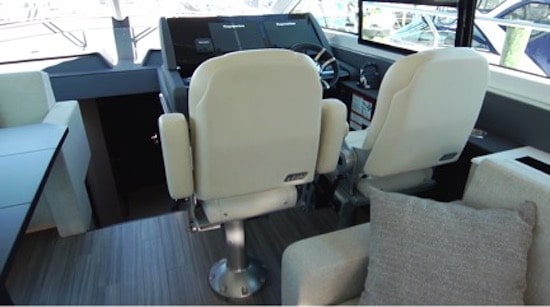
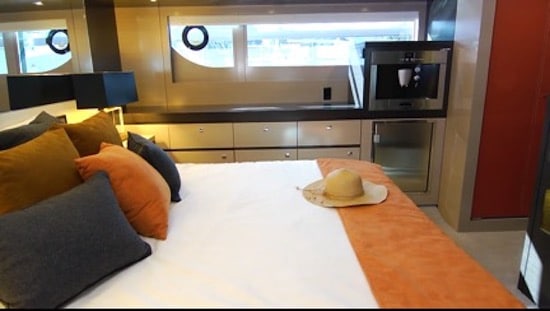 Staterooms
Staterooms